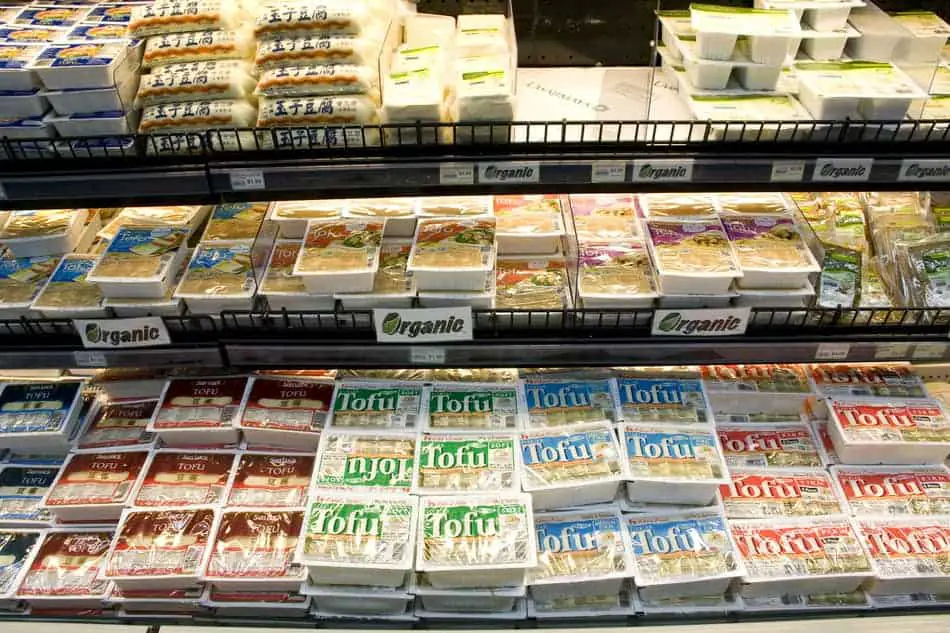
More and more people are cooking with tofu because it’s a great source of plant-based protein. But there are so many types of tofu: soft silken, firm silken, extra firm silken, soft, firm, extra firm and even super firm! How do you know which one to use?
The chart below provides the usual recommended type of tofu that each recipe calls for.
| Recipe | Type of Tofu* |
| Miso Soup | Silken is traditional, but Firm will work; the tofu will simply have a firmer bite. |
| Hot and Sour Soup | Silken, as you want a tender bite in this brothy recipe. |
| Creamy Soups | Silken blends best. |
| Laksa | Firm or Extra Firm, to hold up to the noodles and other ingredients. |
| Stir Fry | Extra Firm, of Firm in a pinch; softer varieties may fall apart. |
| Grilling | Extra Firm, or Firm in a pinch; softer varieties may fall apart. |
| Skewers | Extra Firm, or Firm in a pinch; softer varieties may fall apart. |
| Pad Thai | Extra Firm, or Firm in a pinch. |
| Mapo Tofo | Medium or Firm Silken |
| Deep Frying | Extra Firm, or Firm in a pinch; softer varieties may fall apart. |
| Baking (in solid form, as in cubes, instead of frying) | Extra Firm or Firm. |
| Curry | Extra Firm or Firm. |
| Smoothies | Silken (any). |
| Dips | Silken (any). |
| Puddings | Silken (any). |
| Salad Dressings | Silken (any). |
| Sour Cream (vegan) | Silken (any). |
| Sauces | Silken (any). |
| Pie or Cake (as in vegan “cream” pie or cheesecake) | Silken (any) |
| Scrambled “eggs” (vegan) | Firm or Extra Firm. |
| As an egg substitute in baking | Silken (any) |
*If the chart doesn’t specify “silken,” then the recipe calls for “regular” or non-silken tofu. Both silken and regular tofu are available in soft, firm or extra firm varieties.
Types of tofu are based on how much moisture content they contain. Silken tofu is Japanese in origin, and soft tofu originated in China. They are similar and can be substituted for each other, although soft tofu is a bit less creamy than silken.
If a recipe just calls for “silken” tofu, then any variety of silken should work (soft, firm or extra firm). Or substitute soft block tofu, in a pinch.
If a recipe just calls for “tofu,” I suggest choosing extra firm tofu (not silken). If the tofu is to remain in a solid form in the final recipe, extra firm will hold up best. If the tofu is to be blended or pureed into a liquid, sauce or cream, then choose silken tofu (any firmness).
You can also find super firm tofu, often touted as “high protein.” Use this type any time you would use extra firm or firm tofu. It will have a (duh) firmer bite, and will hold up well in cooking.
How to Prepare Your Tofu
If you are using silken tofu, you do not need to press it. If there is standing liquid in the container, you can drain it off. Otherwise, use it right out of the package.
To Press Or Not to Press?
If you are using block tofu, you will definitely want to drain it; just put it in a colander. Some experts say going a step further and pressing it isn’t necessary if you choose the right type of tofu for your recipe (see chart above). If you buy extra firm or super firm tofu, and you’ve drained it, you are probably good to go without further prep.
However, if you buy a softer variety for a recipe that calls for a firmer variety, pressing the excess moisture out is worthwhile. Otherwise, your tofu may fall apart in cooking. Pressing is also worthwhile if you prefer the firmest texture possible; for example, if you are going for a meaty texture. Pressed tofu also absorbs marinades and seasonings more readily.
You can buy a tofu press like this one for $15-25. I would avoid plastic, which I prefer not to touch food, to ensure no nasty chemicals leach into the porous tofu. However, using a special tool isn’t necessary. Wrap your tofu block in paper towels and set on a plate or bowl that will catch the draining water. Put something heavy on top of the tofu like a cast-iron skillet or several books. In 15-30 minutes your tofu will be ready for use.
I hope this helps takes the mystery out of cooking with tofu!
Not sure what to do with sprouts? Here are some great ideas.
Trying to give up potato chips? Here’s how, with alternate snack ideas.
Interested in getting into rebounding? (It’s really fun!). Read how and why, here.
